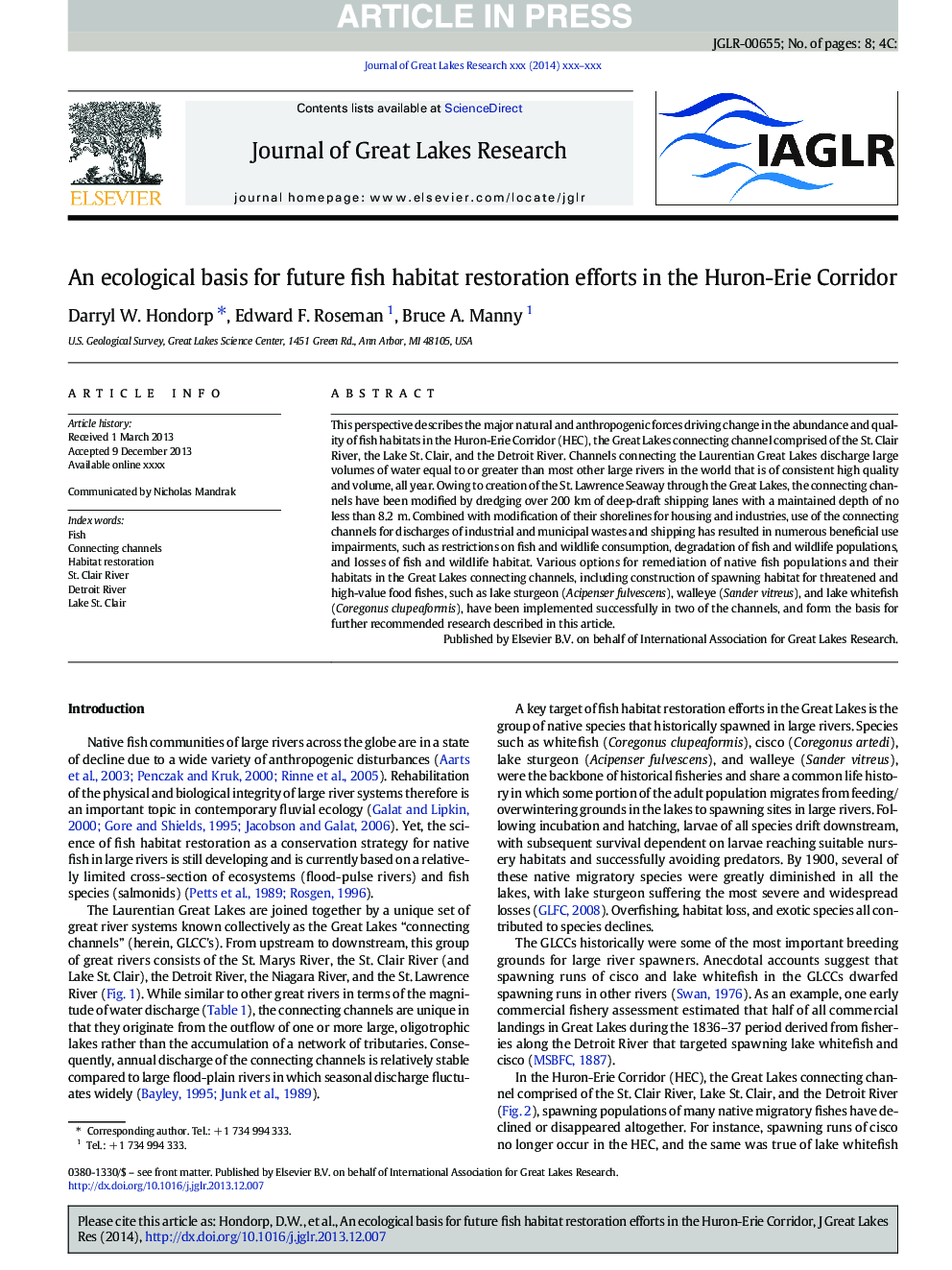| Article ID | Journal | Published Year | Pages | File Type |
|---|---|---|---|---|
| 4398422 | Journal of Great Lakes Research | 2014 | 8 Pages |
Abstract
This perspective describes the major natural and anthropogenic forces driving change in the abundance and quality of fish habitats in the Huron-Erie Corridor (HEC), the Great Lakes connecting channel comprised of the St. Clair River, the Lake St. Clair, and the Detroit River. Channels connecting the Laurentian Great Lakes discharge large volumes of water equal to or greater than most other large rivers in the world that is of consistent high quality and volume, all year. Owing to creation of the St. Lawrence Seaway through the Great Lakes, the connecting channels have been modified by dredging over 200Â km of deep-draft shipping lanes with a maintained depth of no less than 8.2Â m. Combined with modification of their shorelines for housing and industries, use of the connecting channels for discharges of industrial and municipal wastes and shipping has resulted in numerous beneficial use impairments, such as restrictions on fish and wildlife consumption, degradation of fish and wildlife populations, and losses of fish and wildlife habitat. Various options for remediation of native fish populations and their habitats in the Great Lakes connecting channels, including construction of spawning habitat for threatened and high-value food fishes, such as lake sturgeon (Acipenser fulvescens), walleye (Sander vitreus), and lake whitefish (Coregonus clupeaformis), have been implemented successfully in two of the channels, and form the basis for further recommended research described in this article.
Related Topics
Physical Sciences and Engineering
Earth and Planetary Sciences
Earth and Planetary Sciences (General)
Authors
Darryl W. Hondorp, Edward F. Roseman, Bruce A. Manny,
